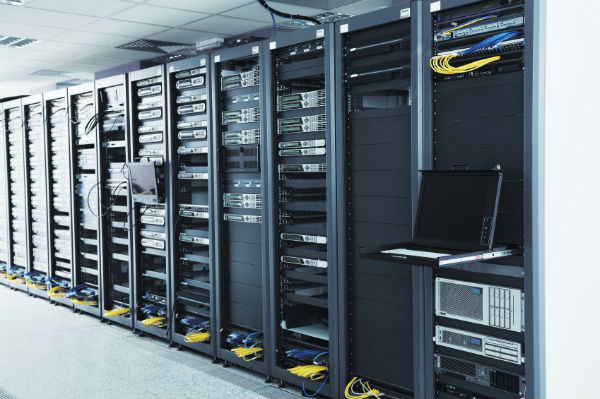Latest Articles
12.21.2012What Can Rendering Service Market Get From Cloud Computing?
12.20.2012Penetrating the Japanese Social Gaming World With the Help of Japanese Social Gaming Companies
12.19.2012Cloud-Based Rendering – the Logical Next Step for Render Farms
Archives
Categories
Tags
Android Basic Cloud Concepts big data CIO cloud Cloud adoption Cloud applications Cloud benefits cloud computing cloud concepts cloud gaming cloud hosting Cloud in business Cloud in Vertical Industries Cloud Migration Cloud News cloud provider cloud security cloud servers cloud services cloud storage cloud technology Enterprise gaming industry Google Government IaaS IT Japan mobile applications mobile gaming PaaS private cloud public cloud SaaS security Small Business small businesses smb SMBs social gaming Social Media social network virtualization virtual servers
Call 855-466-4678
12.21.2012

Evolution of 3D rendering service market and how Cloud Computing promises to deliver more in this unique market segment
3D rendering is something that the modern world is accustomed to frequently especially in the construction field where today’s home makers often showcase an extravagant 3D model to their customers before finalizing on a particular architecture and interior design plan.
Another area where rendering proves to be a vital asset is in the film industry and especially the Hollywood industry. The biggest testimonials to the potential of 3D rendering is the roaring success of movies like Avatar and Transformers, which would not have made it into the spotlight, if this technology had not been advanced to the level we see it today.
But architectural 3D rendering service market is where most of the action happens as per a recent study by TechNavio which has predicted that on a global scale the rate of growth of 3D architectural rendering would be over 35 per cent in the time gap of 2011-2015.
The survey was more biased towards the American market which has shown an increasing appetite for 3D rendering in architecture. Top brass from TechNavio have commented on the insights of the survey by saying that today 3D rendering service providers are moving away from conventional options offered to customers and are now developing packaged solutions which customers can choose as per their requirement. Even Value Added Services are being offered by some service providers.
Marketing efforts of leading construction providers are being given a boost thanks to new age 3D rendering which showcases a fully conceptualized view of a prospective client’s future home. It is possible to model every part of a building and thus getting approval for the whole project happens only after the client is happy in all perspectives.
Other key areas where rendering services are showing their advantages might include the ones already mentioned above i.e. the film industry and also the gaming industry. Looking into the future, service providers are trying to explore new channels of service delivery and one promising methodology that is starting to showcase its potential in the rendering service market is cloud computing.
The gaming industry for instance has now started to shift towards cloud based online gaming environments wherein the actual user is only being provided a rendered image or interface of the game for playing at his comfort level while all the heavy duty graphic processing works and game performance analysis takes place on powerful cloud servers resting in data centers globally. Users only need to play a game remotely with their browser or with perhaps an interface that requires minimal hardware configurations on your system. The rest is taken care of by the cloud based gaming service.
The whole concept behind gaming on the cloud is streaming a huge dataflow onto your remote PC via the internet courtesy of an up and running delivery model i.e. a cloud that the game service provider has offered you with.
Taking 3D rendered content to the masses is another area where cloud computing starts to make heads turn as it provides better 3D farm rendering to folks who are currently unable to do so by themselves owing to limited hardware resources on their individual system. This means that even smaller companies in the film and animation industry as well as the construction industry can develop 3D models as well as work in 3D rendering environments without heavy capital expenditure and powerful resources.
With faster cloud services, achieving 3D rendering from your local PC connected to a cloud rendering service would be faster beyond your imagination and hence you not only save on expenditure with regards to infrastructure costs, but also you get access to high speed rendering services that would work tremendously to your advantage saving you precious time as well.
With the ability of cloud computing to offer 3D rendering services to the masses and at affordable rates, the future of 3D rendering services looks very interesting. This is rightly in tune with a harmonious growth pattern which would see technology combine with other forms of art such as image design, art, architecture and conceptualisation to achieve never before seen levels of perfection in almost all of the basic utility industries and fields like engineering, graphical animation and design industries as well as the entertainment industry.
Our articles are written to provide you with tools and information to meet your IT and cloud solution needs. Join us on Facebook and Twitter.
About the Guest Author:

Mandira Srivastava is a fulltime freelance writer who specializes in technology, health and fitness, politics, and financial writing. Equipped with degree of mass communication and having worked for both private and corporate clients, I have experience meeting a wide range of writing requirements and styles.
12.20.2012

Card-battle games are very popular in Japan and are a major offering for social game platforms. In the west, the card-battle game is not an alien concept, as shown by the popularity of Pokemon on Gameboy, as well as the Magic, the Gathering and other card-battle games of the same genre. Western social gamers are now slowly getting used to Japanese social games.
Western social gamers are now slowly getting used to Japanese social games. Kids who have played the original Pokemon are now adults and more than willing to play Japanese-style social games and card-battle games. It is fair to say that the former Game Boy users would still play card-battle style games or RPGs on the browser or with smartphones. This market segment goes both ways.
Social games have had a big growth which grew along with Facebook. It can also be said that it helped fuel Facebook’s growth during the past few years. Zynga is one company which had a phenomenal growth due to their social games. It earned more than $317 million during the first quarter of 2012. However, even with a worldwide market, it is still nowhere near the earnings of one of the biggest social gaming company in Japan, GREE which had earnings of $558 million for the same period while catering mainly to the Japanese market.
Lately, GREE and DeNA have been focusing on expanding outside of Japan. With a better model for monetizing their mobile game apps, these Japanese firms should be able to grow even more with new markets, while maintaining their hold on Japan. Even with Western companies trying to penetrate the Japanese market, it is not assured that such efforts would have the same success as local Japanese mobile gaming developers and channels.
If there’s anything to be learned about companies trying to enter the Japanese market, it is safe to say that having a Japanese partner or a distribution channel goes a long way in getting in. However, being a success is a different matter altogether. Zynga has been trying to get into Japan, as well as other countries in Asia, and it seems that they still have a long ways to go before they can compete toe to toe with the Japanese companies.
For smaller companies, partnering with Japanese distribution channels is a much better proposition. Japanese distribution channels are open to representing Western game developers which is a leg up for these smaller players. Additionally, it also helps that Japanese channels are always on the look out for new titles.
Another advantage when working with a partner is the localization and culturization which is required for any app in order to be able to compete in the Japanese market. The additional customization by a third-party (which may or may not be the distribution channel) makes the app more acceptable to consumers.
Unlike in Western countries where anime and manga fanboys live to play untranslated Japanese games, the reverse is not true. Mobile games in Japan are very Japanese. The culture and motifs are not just decorative but play a part in the game design and in the game play.
This is a rigid cultural difference which is slow in changing. It has been a lot easier to change perception and cultural acceptance of things Japanese in the West. Lately, there have have been Western cartoons which have been re-imagined as Japanese-style anime for showing in Japan, even though these same comic characters have a big following in their original western style drawings, the owners thought that an anime-style retelling would make it big in Japan – and they did.
The additional step of culturization and choosing to have a Japanese distribution channel are sound strategies, considering the size of the market and the extent of monetization by Japanese mobile game channels.
Our articles are written to provide you with tools and information to meet your IT and cloud solution needs. Join us on Facebook and Twitter.
About the Guest Author:

Rodolfo Lentejas, Jr. is a fulltime freelance writer based in Toronto. He is the founder of the PostSckrippt, a growing online writing business dedicated to producing top quality, original and fresh content. To know more about him, please visit www.postsckrippt.ca. Like him on Facebook or follow him on Twitter, Google+ and Pinterest.
12.19.2012

As more of the Hollywood magic is computer generated, huge server arrays to handle the heavy task of rendering have become a staple of all the major VFX and animation studios. Third party render farms have also become important players due to this market demand and, the increasing need for computing power has resulted in impressive technological breakthroughs. Rendering is an expensive business.
There are thousands of computers that need to be maintained and cooled. Security is also an essential concern – a leak can be devastating for any movie studio. The electricity costs for a render farm can run in the millions of dollars annually. These are also expensive, highly advanced computer systems which can make the infrastructure cost alone prohibitive for a smaller company. However, cloud service providers have started to offer processing and storage services both to visual effects studios and to existing render farms, allowing everyone to save in the process.
Rendering in the cloud seems like a no-brainer, so why aren’t more people doing it?
One of the main concerns with the cloud is security. It is important to note that huge strides have been made in cloud security. If the security of cloud computing is good enough for institutions like the Pentagon and the United States Department of Defense or for important financial institutions and banks around the world, then it certainly can be adapted to the security needs of visual effects studios! After all, credit card transactions and handling a nation’s defense all require exhaustive security measures, all of which have been applied successfully to the cloud. One other concern about cloud rendering is data latency, due to the huge sizes of the files involved in visual effects work. However, the monetary advantages are so substantial that many companies are starting to move to the cloud for their rendering needs.
Why cloud-based rendering is inevitable from a financial point of view
The main advantage of cloud services providers is that they give their customers computing resources on demand. Going back to the concept of the huge, expensive local render farms maintained by large visual effects studios, it simply doesn’t make sense economically. A render farm costs millions of dollars to maintain even when it is not being used. People need to be hired to guard and maintain the computers in a render farm and infrastructure costs can be huge. Cutting a huge swath of their budget with almost no downsides is what cloud services providers offer render farms and visual effects studios.
The offer is so attractive that it is inevitable that rendering will move to the cloud in the future, especially as issues of security and data latency are improved over time. Cloud service providers give studios scalability, only paying for what they need. One studio that has embraced this move is Warner Brothers, that has moved as much of their operation as possible to the cloud. Tax incentives are other reasons to get into the cloud, especially for Hollywood. Since many cloud vendors are not located in California, using their services makes many California-based studios eligible for huge tax rebates applicable in other states.
What can cloud service providers do to assuage render farms’ concerns?
The main factor is data latency. Cloud service providers must pay attention to their data latency, making clear promises on what kind of latency is acceptable. Dedicated data lines are the key here, making sure that the data flows at all times. Safety, in fact, is not such a big issue as it was only a couple of years ago.
Cloud service providers can mirror security protocols used in local render farms or visual effects studios. In fact, a computer can be locked down physically, completely preventing access from outside parties. How to be sure that your cloud service provider is doing everything they can? It is as simple as getting an independent security audit from a third party. You’ll be surprised by the results, in a positive way.
The Asian panorama for cloud-based render farms
Asia is a major market for cloud-based rendering and will continue to grow in the future. Many people forget that India produces the most movies in the world, not Hollywood. In fact, Japan also produces more movies than the United States. Other huge movie producers in the region include Hong Kong and Indonesia. Cloud-based render farms have more possibilities of establishing their services in these regions than in other parts of the world. Many studios in these countries do not have the infrastructure or resources to support a full-time render farm, meaning that cloud-based rendering is a welcome service that allows them to compete in the world market.
Our articles are written to provide you with tools and information to meet your IT and cloud solution needs. Join us on Facebook and Twitter.
About the Guest Author:

Nida Rasheed is a freelance writer and owner of an outsourcing company, Nida often finds herself wanting to write about the subjects that are closest to her heart. She lives in Islamabad, Pakistan and can be found on Twitter @nidarasheed.
12.18.2012

Understanding the results
In the previous part of this paper we discussed the essential differences between cloud based applications and on premise hosted ones when it comes to the testing of applications. A major difference lies in the control that the cloud service provider gives you over your test environment. In case you require tests at a deeper level, the answer in all probability lies in writing a program that uses your application mimicking a user. Such a program can continue to check your application at regular intervals to ensure that it is functioning as expected. Any aberrations can be detected and administrators alerted in near real time.
In most other cases, test results may need to be analyzed more deeply since subtle error conditions may give rise to situations that cannot be detected so easily. Therefore analysis may need to go deeper. This can take the following forms –
Simple Boolean checks – this is the simplest method possible. It checks if your application is giving a response or not. You can compare it to the ‘ping’ command used to check networks. If you get a response, it confirms that the application is on line and the intervening network is working.
Response threshold – under normal conditions of use, your application is expected to give a response within a certain number of milliseconds. Using the cloud, you expect this time to be maintained rather rigidly because if the application load exceeds a value, a new instance should be automatically created. If this is exceeded beyond limits you set, it indicates a problem that needs to be investigated.
Check for consistency of response – quite often, a set of answers from an application will correlate with each other. For example, the numbers of items in your shopping cart must correlate to those in the invoice. If there is a variation, it could be a serious error that needs to be corrected straightaway.
Checking statistically – while there is value in checking spot parameters such as the response time at a given instant, it is the statistical value that gives an indication of a long time trend. Good monitoring programs are able to generate statistical means and compare the spot value with this to determine how much is the variation. This ensures more intelligent checking.
Triggering responses – based on how you have programmed your testing environment, you can get it to trigger a response to critical events. Since cloud based systems are natively well-suited to connect to mobile and smartphone users, one response can be to send a mail or an SMS to an administrator. This ensures that the error condition is handled faster.
Adaptive systems – the more capable monitoring programs come with machine learning and artificial intelligence. They are able to understand results and based on this learning, their future interpretation of results could vary. They are also able to draw inferences and initiate deeper checking if required. For example, if a program is giving out an output faster than anticipated, it could mean that another module that this program depends on is not actually doing a computation but is returning a default value.
Managing corrections – many monitoring programs can follow through on a fault until it is finally resolved. The system works as both a monitoring device and a corrections manager to ensure that the error condition detected is not overlooked.
Multiple warnings – monitoring programs can use multiple methods to attract the attention of administrators to critical problems. A background script decides which problems are critical and which ones aren’t. It is also able to decide on the individuals to be alerted based on the classification of the problem. As mentioned earlier, cloud-based systems are tightly integrated with mobile phone systems and use this capability very effectively to generate appropriate warnings.
Current trends
As is evident from a reading of the above sections, cloud based application monitoring systems have been evolving into extremely capable tools that can take over a number of managerial tasks themselves. This allows for a faster response to emerging problem areas and allows administrators to correct critical issues much earlier than otherwise possible. These monitoring systems are also being used to determine when an application is experiencing light loads and this information is used to work computationally heavy tasks during this period. This kind of optimization can ultimately reduce costs by distributing load over time and ensuring that fewer numbers of processors are hired.
Our articles are written to provide you with tools and information to meet your IT and cloud solution needs. Join us on Facebook and Twitter.
About the Guest Author:
 Sanjay Srivastava has been active in computing infrastructure and has participated in major projects on cloud computing, networking, VoIP and in creation of applications running over distributed databases. Due to a military background, his focus has always been on stability and availability of infrastructure. Sanjay was the Director of Information Technology in a major enterprise and managed the transition from legacy software to fully networked operations using private cloud infrastructure. He now writes extensively on cloud computing and networking and is about to move to his farm in Central India where he plans to use cloud computing and modern technology to improve the lives of rural folk in India.
Sanjay Srivastava has been active in computing infrastructure and has participated in major projects on cloud computing, networking, VoIP and in creation of applications running over distributed databases. Due to a military background, his focus has always been on stability and availability of infrastructure. Sanjay was the Director of Information Technology in a major enterprise and managed the transition from legacy software to fully networked operations using private cloud infrastructure. He now writes extensively on cloud computing and networking and is about to move to his farm in Central India where he plans to use cloud computing and modern technology to improve the lives of rural folk in India.